How to Teach Speech Sounds:
Step-by-Step Guide
In this episode, I give a step-by-step guide how to teach sounds. Also, in the quick tip, I share how you can download my free e-book that gives you a step-by-step process for improving your child’s speech at home.
Listen to the Teaching Speech Sounds Podcast Episode Here:
How to Teach Speech Sounds:
In this episode you will learn the entire process of how to teach sounds to your child including:
-
- Phonological Approach Vs. Articulation Approach
- This is articulation, one sound at a time
- Isolation
- Choose sound
- Ages for sounds: http://www.speechandlanguagekids.com/how-to-teach-a-new-sound/
- elicitation techniques: same link
- think about how you make it
- describe tongue, teeth, lips
- Choose sound
- Phonological Approach Vs. Articulation Approach
How to Teach Speech Sounds in Isolation:
- /b/
To produce the /b/ sound, use the following cues with your child.
- Watch My Mouth (this will help him see what your lips are doing)
- Put your lips together
- Make your lips pop
- Make your voice hum/Turn your voice on
Help your child push his lips together with his fingers if he’s having trouble getting them closed
/p/
If your child is having trouble with /p/, use the same cues as for /b/ but you will not tell her to turn her voice on. You can have her whisper the sound if she’s making it sound like a /b/ instead of a /p/.
/w/
To make the /w/ sound, have your child start by saying “oo” like in “boo” and then slowly move the lips apart to say “uh”. It should sound like “oooouuh”.
/m/
The /m/ sound is produced by pushing the lips together and humming. Have your child hold his lips closed and then ask him to hum or turn his voice on. The mouth should not open at all during this sound, all of the air should come out of the nose.
/f/
Use these cues to get your child to say the /f/ sound:
- Bite your bottom lip (use a mirror to help your child see what she is doing)
- Hold your lip there and blow
You may need to have your child use her finger to keep her lip in the right place.
/v/
To produce the /v/ sound, use the same cues as /f/ except that you will need to have your child hum or turn his voice on. If your child is struggling with this, try having him hum a tune while biting his bottom lip with his top teeth. If your child is struggling to hold his lip with his teeth, have him use his finger to keep it in place.
“th”
To produce the “th” sound, have your child place her tongue between her teeth and blow. There are actually two versions of this sound, one with the voice on (like “the”) and one with the voice off (like “thumb”). Have your child hum if it’s the voiced one.
/t/
To produce the /t/ sound, have your child tap her tongue right behind her top, front teeth. If your child is having trouble figuring out where to put her tongue, use these techniques to show her the right place:
- Touch the spot right behind the top, front teeth with a popsicle stick or sucker. Then tell her to put her tongue in the same spot.
- Put a sticky food, like peanut butter or marshmallow cream, on the spot right behind her top, front teeth. Then, have her lick it off. When you are describing that spot again, call it the sticky spot.
/d/
To produce the /d/ sound, you can use the same cues as the /t/ sound, but your child will need to turn his voice on. Tell him this is the loud one.
/n/
For the /n/ sound, your child will need to put her tongue in the same spot as the /t/ sound (see the cues mentioned for /t/). This time though, your child will hold the tongue in that spot while she hums or turns her voice on. If she is having trouble turning her voice on, have her hum a tune while holding her tongue in that position.
/s/
For the /s/ sound, have your child put his tongue in the same place as /t/ (use the placement cues from /t/) but then blow air out. We call this the snake sound! If your child is sticking his tongue out too far, look in a mirror and tell him to keep his tongue behind his teeth. You can practice smiling so that his teeth are touching and there is no place for the tongue to peak out.
/z/
For the /z/ sound, use the same cues a /s/ but this time your child will need to hum or turn her voice on. You can have her practice turning her voice on by humming a tune while saying the /s/ sound.
/l/
For the /l/ sound, have your child slowly move his tongue up to the /t/ spot and back down again. While he’s doing this, have him hum or turn his voice on.
“y”
To produce the “y” sound, have your child start by saying “ee” like in “bee” and then slowly open the mouth to say “uh”. It should sound like “eeeeeuuuhh”.
“sh”
I call this the quiet sound. To make this sound, have your child form her lips into a little circle and blow. If your child is saying /s/ instead of “sh”, ask her to pull her tongue back towards the back of her mouth.
“zh”
This is the sound heard at the end of the word “beige”. This one isn’t very common in our language but it’s produce the same way as “sh” except with the voice humming or turned on.
“ch”
This sound is produced by saying “t” and “sh” quickly together. This one is pretty difficult so don’t get frustrated if he can’t say it!
“j”
The “j” sound is made by saying the “d” sound and the “zh” sounds very quickly together. This may be another one that is best worked on by a speech-language pathologist
“r”
The /r/ sound is a very tricky sound to produce. There are actually two different ways of producing this sound, one with the tongue scooped like a bowl and one with it curved like a mountain. For each person, one of these ways will feel better than the other but you cannot force someone to say /r/ in the way that isn’t natural for them. What you have to do instead is figure out which way they do it best. The easiest way to do this is to listen for any words with /r/ that your child says well. For most children, there are a few words that they can say with a good /r/ already, you just have to be listening for them. Once you find that word, have your child hold out the /r/ in the word so she can feel what a good word sounds like. Then, try to find other words that use /r/ in the same way. For example, if your child can say “car” well, try first to get other words that end in “ar” like “bar” and “far”. Once your child can do those, move to words that are similar, like “aardvark” or “marshmallow”
/k/
To produce the /k/ sound, your child will need to get his tongue to the very back of his mouth. If your child is having trouble finding the right place for his tongue, use some of these placement cues:
- Get a small sucker (like a dum-dum) or a popsicle stick. Gently push down the front of your child’s tongue so that it cannot rise up to say a “t” sound You can also push his tongue back slightly with the sucker or stick to move the tongue backward. Show him this on yourself first so he doesn’t get scared.
- Have your child lay on his back while saying this sound. Gravity may help him drop his tongue back.
- Using your thumb, gently push up and back on the soft spot on the bottom of your child’s chin. This may get the tongue back to the right position.
/g/
The /g/ sound is produced the same way as the /k/ but with the voice turned on.
/h/
The /h/ sound is produced by making puffs of air at the back of the mouth. Have your child pretend to pant like a dog to make this sound.
How to Continue to Teach Speech Sounds Beyond Isolation:
-
- Syllables
- Use a rainbow or sound spider to pair the sound with a vowel
- Words
- Articulation Station App: https://itunes.apple.com/us/app/articulation-station/id467415882?mt=8
- Carrier Phrases (such as “I see ball, I see bat”).
- Sentences (Have your child make up his own sentences about each word)
- Structured conversation
- rote recall
- rapid naming
- Describing sequences
- story starters
- Recall past events
- Focused good speech time
- increasing duration and frequency
- Syllables
Free Therapy Materials for Teaching Sounds:
Check out the freebies that we have inside our Free Therapy Material Library!
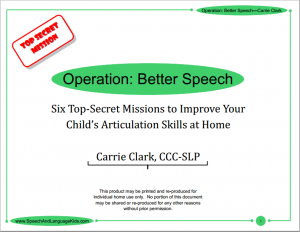
Operation Better Speech!
Home Program for Teaching Sounds
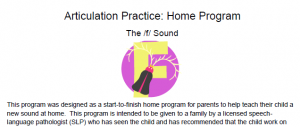
/f/ Speech Sound Home Program
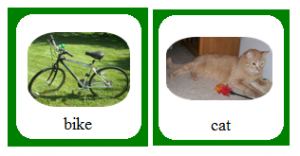
CV, VC, CVC, and CVCV
Flashcards and Worksheets
(For practicing speech sounds in shorter words)

About the Author: Carrie Clark, MA CCC-SLP
Hi, I’m Carrie! I’m a speech-language pathologist from Columbia, Missouri, USA. I’ve worked with children and teenagers of all ages in schools, preschools, and even my own private practice. I love digging through the research on speech and language topics and breaking it down into step-by-step plans for my followers.
Connect with Me:
Podcast: Play in new window | Download | Embed
Subscribe: RSS

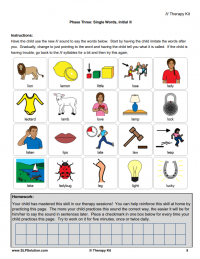
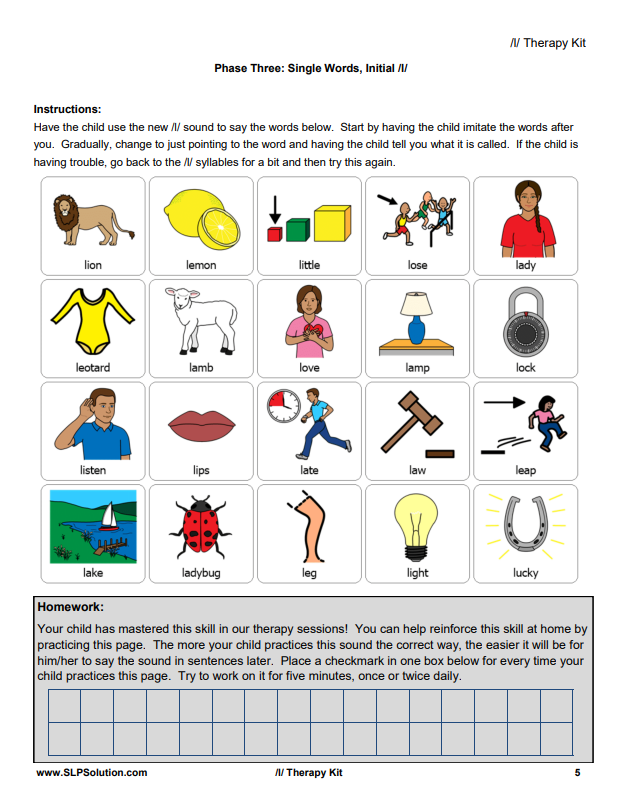








Leave A Comment